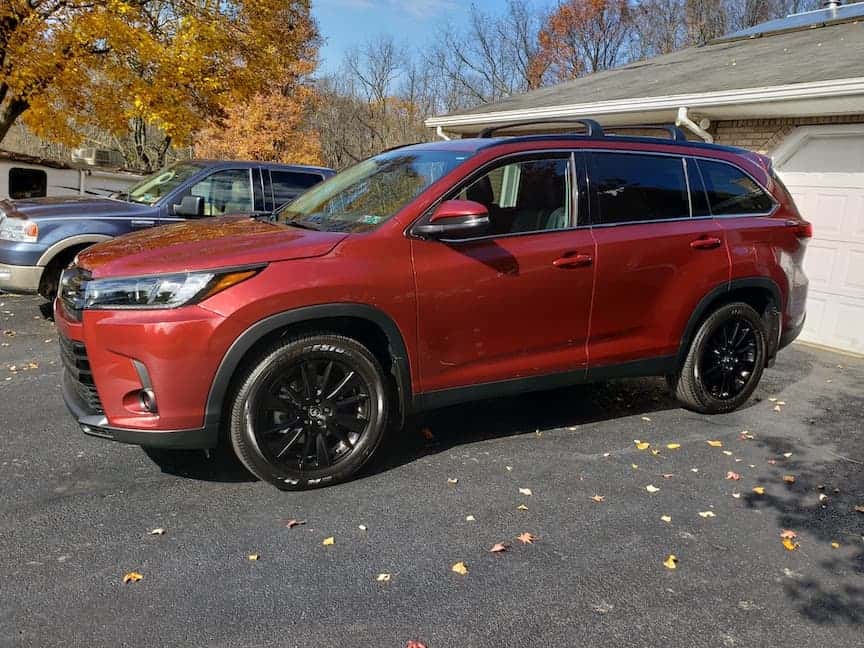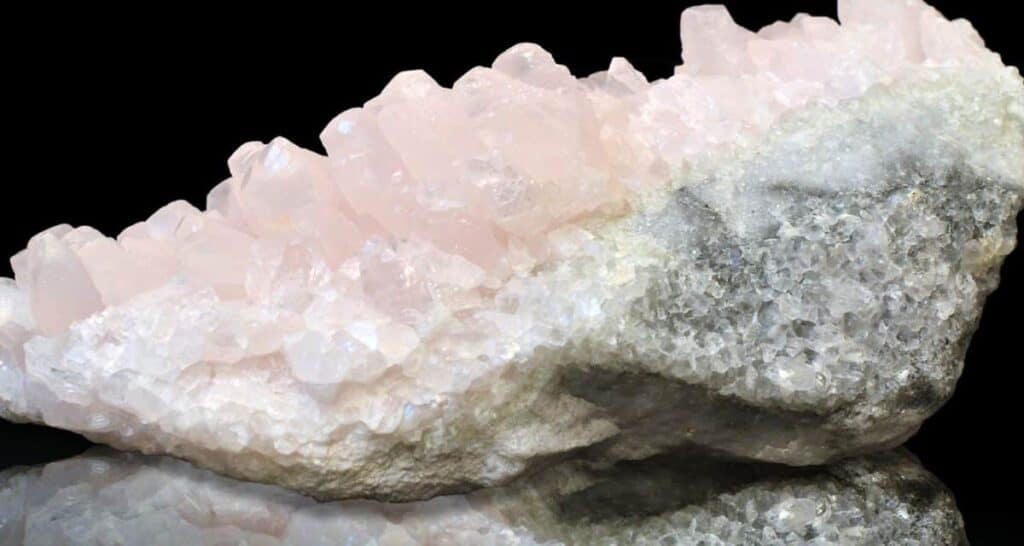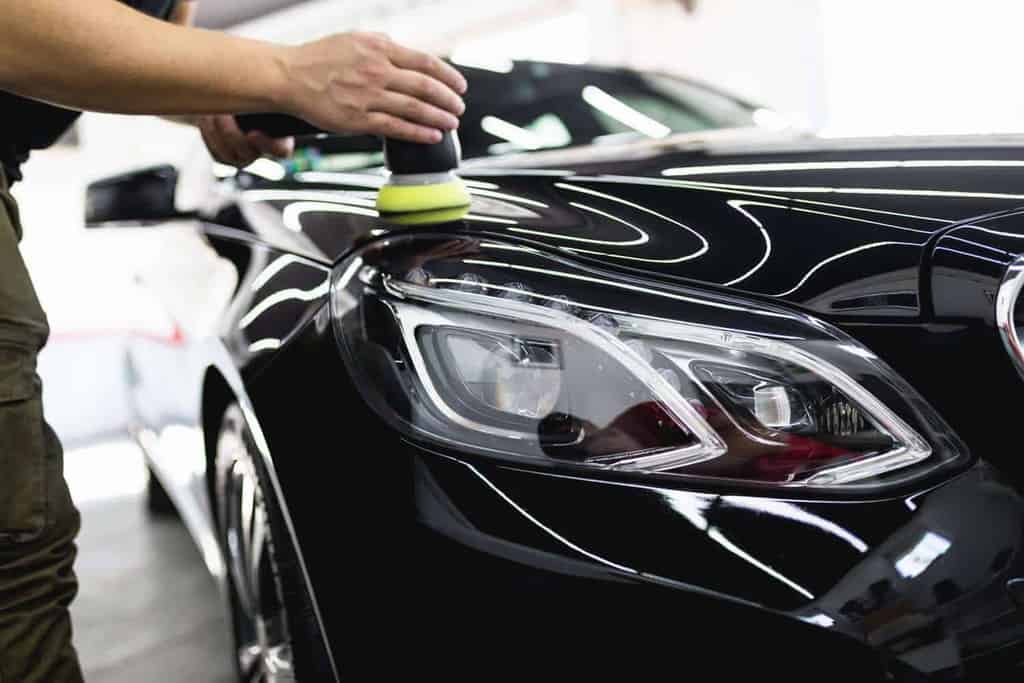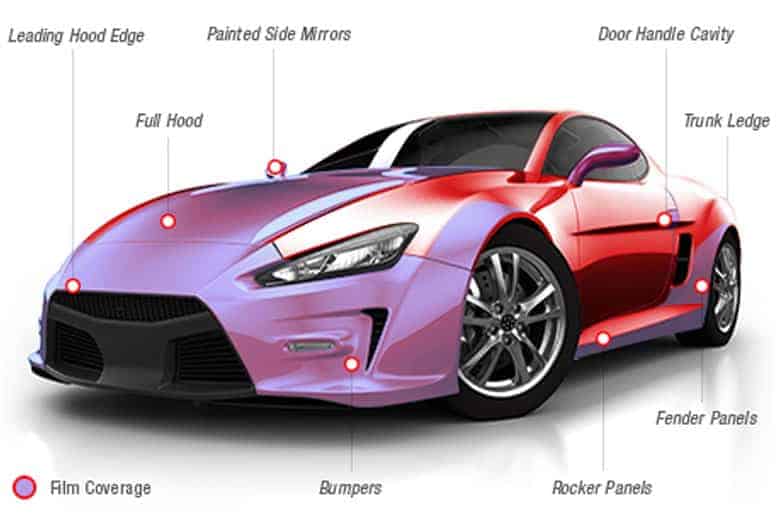Ready to head back to second-grade English class? If you recall, a homonym is two words that sound the same – but have two different meanings. But, did you know that there are multiple types of homonyms? A Homophone sounds similar, but has two different meanings, while the homograph is one word, spelled the same, with different meanings.
Then there is the phrase “Ceramic Coating” – and all our basic English rules are tossed out the window.
With all due respect, the automotive world has a way of screwing up basic English rules. Such is the case with the phrase Ceramic Coating. It’s assumed that a ceramic coating spray and a DIY nano-ceramic coating are the same product – that accomplish the same task.
Well – that would be wrong; like way wrong. What’s the truth – we’ll explain in detail below.
Comparing Nano Ceramic Coatings vs Ceramic Coating Sprays
The truth is that a nano-ceramic coating is much different than your prototypical spray and go ceramic coating spray. Throw in the ceramic coating spray booster – and the waterless wash with SiO2 – and you really complicate the car care world.
But it doesn’t have to be this convoluted. In fact, when you break down each product individually, explain how each is formulated, what they are comprised of, how they’re applied, and how long they provide protection – it’s become much clearer how different these products are.
This is what we’ll explain in today’s AvalonKing blog. We’ll break down the facts about ceramic coating products for protecting automotive surface areas. We’ll also help you understand which one is best for your individual application.
Introducing the Automotive Ceramic Coating Family

There are several automotive ceramic coating products on the market these days. Some of them help to remove water spots, fill scratches, or act as a sealant. There are others that are great at protecting against bird droppings, enhance shine, and prohibit the buildup of dirt, dust, and debris.
And while there are several different types, styles, and brands, at the source, they’re all able to use the phrase ‘ceramic coating’ because – they really are products that provide a protective layer and long-lasting ceramic car care protection.
Let me explain – because this is where the confusion comes into play.
What is Ceramic?
A ceramic, by definition, is an inorganic and non-metallic material. Ceramic products surround our daily lives and include common products like bricks, glass, plates, tiles, and yes – even our toilets.
Ceramic products are found in high-performance racing engines, phone lines, and serve as high-temperature heat coatings – used on the Space Shuttle, aerospace parts, and yes – that coating you apply to your cars paint.
What is a Coating?
Again, by definition, a coating is a covering that has been applied to a surface area of a material or object – also called a substrate. The coating may serve to act as a functional purpose, decorative, or in some cases – both. The coating can be applied over the entire substrate, on certain parts, or in multiple layers. It can also be applied as a powder, liquid, or concentrated formula – either topically or as a spray.
So – when we analyze the root definition of a ceramic coating on a broad scale, we can state that it’s a man-made substance that is intended to protect or enhance a surface. This wide definition is exceptionally confusing, as it doesn’t narrow down its duties, benefits or attributes.
What are the Types of Ceramic Coatings for Cars?

There are many ways to skin a cat. There are just as many different types of ceramic coating for cars – each made from different root materials, with unique formulations, and application methods.
Regardless of the specific application – all ceramic coating products used to protect a vehicle’s paint surface, wheels, glass, and other parts and pieces are made from the following materials. They also work better than car wax. Sorry, boomer – just facts.
They also can amplify swirl marks, protect against acid rain, but they don’t prohibit rock chips – like a clear bra can in comparison. They are better than waxes, not as great as pro-grade coatings applied only by professional detailers.
A Polymer Substance

Polymers or epoxy materials are quite popular with ceramic coating sprays that are intended to provide a bond with factor paint clear coatings via a spray and wipe method. Polymers adhere to porous materials but mainly stick to them – as opposed to penetrating the microscopic imperfections found in many porous materials like clear coatings, plastics, and even metals or glass.
A Quartz Substance

Liquid quartz (not to be confused with Liquid Schwartz) is comprised of silicon dioxide or SiO2 and other concentrated synthetic materials. They are designed to harden on a surface – and maintain that hardness for a specific time period.
Within quartz ceramic coatings are many different grades – that range from 5 percent of SiO2 (usually found in ceramic booster sprays and waterless wash products) – all the way to 95 to 97 percent SiO2 – found in professional-grade nano-ceramic coating products.
When applied correctly, and removed with a microfiber cloth, they can help with scratch resistance, reduce oxidation, protect from UV Damage, high temperatures, and resistance to bird droppings and bug splatters.
Hybrids
Imagine taking the best of the polymer coatings and infusing some quartz into them for longer-lasting protection? This is the hybrid ceramic coating – a product and blend that is typically applied via spraying or aerosol application.
They claim to provide the best of everything – but in all reality – they’re not all that great and are mainly cheaply made products, with low SiO2 percentages mixed with multiple hydrophobic or water-repelling polymers. Are they better than wax or sealant products? Yes and no; honestly, the jury is still out.
The Levels of Ceramic Coating Protection
So, now that we’ve explained the core differences with ceramic coating formulations, now let’s examine the different products – the level of protection they provide, and the types of customer or situation they are best-suited.
DIY Nano Ceramic Coating – 2 to 5 Years of Protection

On the top of the ceramic coating product line is a DIY nano ceramic coating – like Armor Shield IX. It’s a highly concentrated liquid polymer that is infused with SiO2 at an aggressive percentage. Armor Shield IX is considered the best DIY ceramic coating (not by us – but the thousands of customers who have reviewed the product over the past two years).
A superior DIY nano coating is going to have a SiO2 percentage above 80%, but lower than 86 percent. This is the ‘happy zone’ which allows DIYers to apply it themselves. Professional-grade ceramic coatings are about 93 percent SiO2. Those products are applied by professional detailers only.
The general rule of thumb is that the higher SiO2 percentage, the stronger the coating is going to harden, the more durable it will be, and thus, longer it will last.
There are several grades of DIY nano coatings, and you can pretty much rate them based on their SiO2 percentage. You’ll find cheap DIY ceramic coatings on Amazon or E-Bay, that can be sold for as little as $5.00 per 30ml bottle, but they rarely last a year – and you need to purchase supplies to apply them in most cases.
Spray Ceramic Coatings
This is stuff like Chemical Guys Hydrocharge, Adams Spray Ceramic Coating Booster, and others brands out there. Basically, these are solvent-based sprays that are infused with about 10 to 14 percent SiO2. It’s very easy to apply – as you simply spray the surface, wipe it off with a microfiber towel, and flip the towel to a dry side to buff off the residue.
These products can be used as a ceramic coating ‘booster’ – which helps to extend the lifespan of your nano-coating, or a standalone product. The hydrophobic properties can hold up for about a year, but in most cases, it’s a product many consumers apply once per month or every few months.
However, Adams Polishes has recently introduced their liquid ceramic coating spray – which is claimed to have a 9H hardness – but expected longevity of about 6 to 8 months. Watch Pan the Organizer explain how this stuff works in the video above.
Hybrid Spray Ceramic Coatings
You’ll also find hybrid sprays like Mothers CMX that contain a blend of SiO2 and TiO2 or Titanium Dioxide. Some of these products are hybrids of SiO2 – and synthetic spray wax. If the product contains spray wax, it really doesn’t work that well.
The main reason is that the SiO2 or silica dioxide is designed to harden – and leave a flat layer of protection. This is what creates the hydrophobic properties that ceramic coatings are intended to deliver. When you combine a spray wax or sealant with that blend, it dilutes the SiO2’s ability to harden or leave that flat layer.
Picking Between Nano Coatings vs Ceramic Coating Sprays

So – what’s best for my car or situation?
Each of these products offers consumers with different benefits. But which one is best for you?
Well, that depends on what you’re looking for with a ceramic coating automotive product. Here is what I recommend for each type of consumer:
Looking for a Simple to Apply Spray – Ceramic Coating Spray

If you’re in search of a quick to apply, a sprayable product that can help resist contaminants – then the ceramic coating booster spray is your best option. It is simple to apply, can last up to a year, and can be reapplied with having to remove it from the surface. It doesn’t really layer on top of other applications, so it’s best to use this type of product every 3 to 4 months.
Looking for an Economic Solution – DIY Nano Ceramic Coating
For those looking for the best buy, a DIY ceramic coating that can last from 2 to 5 years is your best value by far. Most ceramic coating sprays will cost you anywhere from $30 to $50 – for about 3 applications (on your average two-door coupe). If you complete this method every 3 months, you’ll go through 4 bottles in two years – costing you as much as $200.
The DIY nano ceramic coating kit like Armor Shield IX costs you $69.99 – and includes everything you need to apply it correctly. Oh, and Armor Shield IX, lasts anywhere from 2-5 years on average, and is covered by a two year guarantee via AvalonKing’s warranty program.
Looking for Longest Lasting – DIY Nano Ceramic Coating
A hybrid ceramic coating spray tends to last the shortest – typically only a few months. The ceramic coating booster sprays can hold up for about twice that – with some of the higher-quality brands lasting almost a year.
DIY Nano Ceramic Coating will last for at least two years, providing you with exceptional hydrophobic properties, UV protection, and more – at a much better value than any spray-on ceramic coating products. With proper application, prep work, and a little aftercare, Armor Shield IX can easily last up to 5 years.
In fact, when you combine a superior DIY nano coating, with handwashing every two weeks, and apply a good ceramic booster spray, the sky is the limit. We’re working on developing a new ceramic coating spray, so stay tuned!













9 comments
Tadd Long
In the COMPARING NANO CERAMIC COATINGS VS CERAMIC COATING SPRAYS video, I would call it cross contamination to use the same towel each time you wet down and dry off the test sections. If true, it make sense why after several wettings all of the sections bead the same 🤷🏻♂️
In the COMPARING NANO CERAMIC COATINGS VS CERAMIC COATING SPRAYS video, I would call it cross contamination to use the same towel each time you wet down and dry off the test sections. If true, it make sense why after several wettings all of the sections bead the same 🤷🏻♂️
Dale Pearl
Hello James. We released a booster spray last year and it quickly sold out! Based on customer feedback we are tweaking the formula and kit prior to releasing our booster spray.
Hello James. We released a booster spray last year and it quickly sold out! Based on customer feedback we are tweaking the formula and kit prior to releasing our booster spray.
Dale Pearl
Hi Mike!
We do try to answer them all!
Hi Mike!
We do try to answer them all!
Mike
Pity some of the questions have gone unanswered….
Pity some of the questions have gone unanswered….
francis pangan ,
very kind.very informative.thsnk you.
very kind.very informative.thsnk you.
James Quaschnick
Hi Tim,
Any news on this question? Thanks much.
Hi Tim,
Any news on this question? Thanks much.
James Quaschnick
Great information.
Can you tell me more about the “new ceramic coating spray” you mentioned in your last paragraph? I’m assuming this will be a ‘booster’ to be used with Armor Shield IX. When will it be available and what will it cost?
Thanks.
Great information.
Can you tell me more about the “new ceramic coating spray” you mentioned in your last paragraph? I’m assuming this will be a ‘booster’ to be used with Armor Shield IX. When will it be available and what will it cost?
Thanks.
Jim Hunt
I found this information very interesting, and I have some questions. I purchased 3 bottles of you product about a year ago and am very satisfied with the results. I purchased a new car about a month ago and, in a moment of very bad judgement, purchased their paint protection coating (Lux XT) that is warranted to last 7 years at a very high price. While their product appears to be performing OK as far as dirt not sticking to the paint as much as it might otherwise, I am not satisfied in other ways.
The preparation was not done well and the surface is not as smooth as the truck I coated with your product 9 months ago. There are also some fine scratches in the trunk lid.
My questions are what should I do next?
A. What is Lux XT, a sealant? or what? and should it be removed? If so, how?
B. Would it be OK to leave it in place and go over it with one of the ceramic sprays or your product?
C. Would clay barring it remove it entirely?
D. Should I start over and clay bar the paint, polish out the scratches, wipe the car down with alcohol and coat with your product?
E. Can I: salvage some of the cost of the treatment and clay bar the finish to smooth it and treat with one of the ceramic sprays?
F. Other suggestions?
I will be kicking myself for a long time for wasting the money, but that ship has sailed. What do you suggest I do now?
Thanks in advance for any suggestions you may have.
I found this information very interesting, and I have some questions. I purchased 3 bottles of you product about a year ago and am very satisfied with the results. I purchased a new car about a month ago and, in a moment of very bad judgement, purchased their paint protection coating (Lux XT) that is warranted to last 7 years at a very high price. While their product appears to be performing OK as far as dirt not sticking to the paint as much as it might otherwise, I am not satisfied in other ways.
The preparation was not done well and the surface is not as smooth as the truck I coated with your product 9 months ago. There are also some fine scratches in the trunk lid.
My questions are what should I do next?
A. What is Lux XT, a sealant? or what? and should it be removed? If so, how?
B. Would it be OK to leave it in place and go over it with one of the ceramic sprays or your product?
C. Would clay barring it remove it entirely?
D. Should I start over and clay bar the paint, polish out the scratches, wipe the car down with alcohol and coat with your product?
E. Can I: salvage some of the cost of the treatment and clay bar the finish to smooth it and treat with one of the ceramic sprays?
F. Other suggestions?
I will be kicking myself for a long time for wasting the money, but that ship has sailed. What do you suggest I do now?
Thanks in advance for any suggestions you may have.
Craig Elliott
Phenomenal article! Found it to be both educational and thorough. I’ll definitely be sharing this article amongst my friends and co-workers.
Phenomenal article! Found it to be both educational and thorough. I’ll definitely be sharing this article amongst my friends and co-workers.